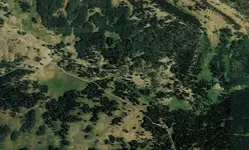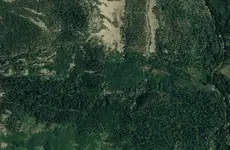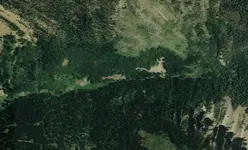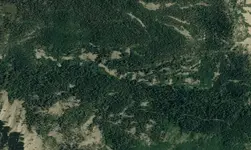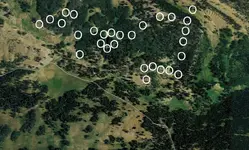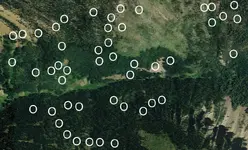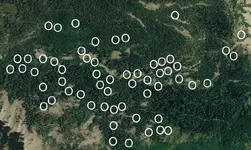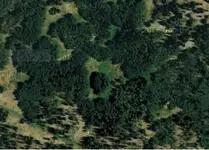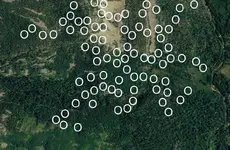You are using an out of date browser. It may not display this or other websites correctly.
You should upgrade or use an alternative browser.
You should upgrade or use an alternative browser.
Looking for Gemstones
- Thread starter bookcliff
- Start date
Red_desert
Gold Member
- Joined
- Feb 21, 2008
- Messages
- 7,157
- Reaction score
- 3,791
- Golden Thread
- 0
- Location
- Midwest USA
- Detector(s) used
- Garrett Ace 250/GTA 1,000; Fisher Gold Bug-2; Gemini-3; Unique Design L-Rods
- Primary Interest:
- All Treasure Hunting
Red_desert
Gold Member
- Joined
- Feb 21, 2008
- Messages
- 7,157
- Reaction score
- 3,791
- Golden Thread
- 0
- Location
- Midwest USA
- Detector(s) used
- Garrett Ace 250/GTA 1,000; Fisher Gold Bug-2; Gemini-3; Unique Design L-Rods
- Primary Interest:
- All Treasure Hunting
Red_desert
Gold Member
- Joined
- Feb 21, 2008
- Messages
- 7,157
- Reaction score
- 3,791
- Golden Thread
- 0
- Location
- Midwest USA
- Detector(s) used
- Garrett Ace 250/GTA 1,000; Fisher Gold Bug-2; Gemini-3; Unique Design L-Rods
- Primary Interest:
- All Treasure Hunting
Red_desert
Gold Member
- Joined
- Feb 21, 2008
- Messages
- 7,157
- Reaction score
- 3,791
- Golden Thread
- 0
- Location
- Midwest USA
- Detector(s) used
- Garrett Ace 250/GTA 1,000; Fisher Gold Bug-2; Gemini-3; Unique Design L-Rods
- Primary Interest:
- All Treasure Hunting
There is something called "vegetation anomaly" something to check out here. Here is a page, attaching a print screen of the part of page to look at----- Diamond Prospecting - Prospector's Guide to Diamonds
Attachments
Red_desert
Gold Member
- Joined
- Feb 21, 2008
- Messages
- 7,157
- Reaction score
- 3,791
- Golden Thread
- 0
- Location
- Midwest USA
- Detector(s) used
- Garrett Ace 250/GTA 1,000; Fisher Gold Bug-2; Gemini-3; Unique Design L-Rods
- Primary Interest:
- All Treasure Hunting
Ok, look at the top image on the page, where it says "Sloan 5 Kimberlite showing vegetation anomaly - open park with no trees & nice stand of trees growing along a lineament on its right side." Now look at this cropped down area from 1st map in this thread.
Attachments
Red_desert
Gold Member
- Joined
- Feb 21, 2008
- Messages
- 7,157
- Reaction score
- 3,791
- Golden Thread
- 0
- Location
- Midwest USA
- Detector(s) used
- Garrett Ace 250/GTA 1,000; Fisher Gold Bug-2; Gemini-3; Unique Design L-Rods
- Primary Interest:
- All Treasure Hunting
Cochetopa
Jr. Member
- Joined
- May 2, 2009
- Messages
- 65
- Reaction score
- 23
- Golden Thread
- 0
- Location
- Galt's Gulch, Colorado
- Detector(s) used
- Minelab Eureka Gold
- Primary Interest:
- Prospecting
Hey, Red_desert,
Good detective work and thanks for the link to "Prospecting for Diamonds".
-C
Good detective work and thanks for the link to "Prospecting for Diamonds".
-C
Red_desert
Gold Member
- Joined
- Feb 21, 2008
- Messages
- 7,157
- Reaction score
- 3,791
- Golden Thread
- 0
- Location
- Midwest USA
- Detector(s) used
- Garrett Ace 250/GTA 1,000; Fisher Gold Bug-2; Gemini-3; Unique Design L-Rods
- Primary Interest:
- All Treasure Hunting
You're welcome Cochetopa! Yes, I think most western US state have lost treasure legend about prospectors finding raw diamond sites. The "Prospecting for Diamonds" website does seem to be a good one, packed with info on diamond prospecting.
bookcliff
Sr. Member
- #10
Thread Owner
Thanks Red. I've been away from the site a few days. That's a lot of circles. Upon further investigation I found that there are three different sets of claims here. Must be a good place. The claims are mostly on the first photo and perhaps the second photo. I also discovered some claims in another location I'm interested in. I do believe they're looking for ore rather than gemstones though. Probably gold. But ya never know. I may get up there soon. Thanks.
Red_desert
Gold Member
- Joined
- Feb 21, 2008
- Messages
- 7,157
- Reaction score
- 3,791
- Golden Thread
- 0
- Location
- Midwest USA
- Detector(s) used
- Garrett Ace 250/GTA 1,000; Fisher Gold Bug-2; Gemini-3; Unique Design L-Rods
- Primary Interest:
- All Treasure Hunting
The white circles were meant to be for all types of gemstones. But in checking, seemed to be mostly or all of diamonds and the diamond ore. In one map I did check for quartz, a signal was a different spot than the circles, could have been a vein (didn't check it for raw gold).
Red_desert
Gold Member
- Joined
- Feb 21, 2008
- Messages
- 7,157
- Reaction score
- 3,791
- Golden Thread
- 0
- Location
- Midwest USA
- Detector(s) used
- Garrett Ace 250/GTA 1,000; Fisher Gold Bug-2; Gemini-3; Unique Design L-Rods
- Primary Interest:
- All Treasure Hunting
If these sites are in Utah, a few minutes of searching turned up 2-3 counties, could be worth searching.
1. Mountain range with lost diamond mine legend and a diamond rush because of the story told by a prospector.
2. Ghost town was called Diamond, because prospectors believed the crystals found in the area were diamonds.
3. A diamond mine is located in one county.
4. Old diamond mine by the same name in another county.
1. Mountain range with lost diamond mine legend and a diamond rush because of the story told by a prospector.
2. Ghost town was called Diamond, because prospectors believed the crystals found in the area were diamonds.
3. A diamond mine is located in one county.
4. Old diamond mine by the same name in another county.
Last edited:
Red_desert
Gold Member
- Joined
- Feb 21, 2008
- Messages
- 7,157
- Reaction score
- 3,791
- Golden Thread
- 0
- Location
- Midwest USA
- Detector(s) used
- Garrett Ace 250/GTA 1,000; Fisher Gold Bug-2; Gemini-3; Unique Design L-Rods
- Primary Interest:
- All Treasure Hunting
Try searching with the words "Utah diamond mine" and depending on the search engine used, should find some info.
Red_desert
Gold Member
- Joined
- Feb 21, 2008
- Messages
- 7,157
- Reaction score
- 3,791
- Golden Thread
- 0
- Location
- Midwest USA
- Detector(s) used
- Garrett Ace 250/GTA 1,000; Fisher Gold Bug-2; Gemini-3; Unique Design L-Rods
- Primary Interest:
- All Treasure Hunting
Ok, didn't have time to check it out.....we still have a mountain range and the ghost town, lost mine legend. Should be some undiscovered or overlooked sites also. There seems to be a geology right for diamond finds, only a matter of finding out the range and extent of the possible search areas.
Red_desert
Gold Member
- Joined
- Feb 21, 2008
- Messages
- 7,157
- Reaction score
- 3,791
- Golden Thread
- 0
- Location
- Midwest USA
- Detector(s) used
- Garrett Ace 250/GTA 1,000; Fisher Gold Bug-2; Gemini-3; Unique Design L-Rods
- Primary Interest:
- All Treasure Hunting
I tried checking the marked spots for other type gemstones, even for coal. So far, can't get a response on anything else. There was quartz responses other places, but not at the white circle signals.
(Edit: after checking about the possibility of a gemstone I'm not familiar with, might be another type of gemstone deposit.)
(Edit: after checking about the possibility of a gemstone I'm not familiar with, might be another type of gemstone deposit.)
Last edited:
Red_desert
Gold Member
- Joined
- Feb 21, 2008
- Messages
- 7,157
- Reaction score
- 3,791
- Golden Thread
- 0
- Location
- Midwest USA
- Detector(s) used
- Garrett Ace 250/GTA 1,000; Fisher Gold Bug-2; Gemini-3; Unique Design L-Rods
- Primary Interest:
- All Treasure Hunting
Check this out...
http://geology.utah.gov/surveynotes/gladasked/gladberyl.htm
"Red beryl formation began with the eruption of a topaz rhyolite lava from
volcanic vents. As the lava began to cool, shrinkage cracks formed, creating
pathways for hightemperature gases rich in beryllium to escape. Oxidized surface
water also began seeping into these cracks and mixed with the rising beryllium
gases. The gases reacted with the surface water, silica, alkali feldspar, and
ironmanganese oxides from the lava to form red beryl crystals."
" Originally, the mineral was named bixbite, but now red beryl is the most accepted designation. Red beryl is estimated to be worth 1,000 times more than gold and is so rare that one red beryl crystal is found for every 150,000 diamonds."
Wow!!! One Utah county has a mountain range, where crystals found there, are much rarer than diamonds. Why prospect for gold? It might be something else. When marking the white circle hits, only was checking for gemstones, nothing specific. The problem was I couldn't pick the right gemstone for to ID which gemstone. Diamond came the closest to the signal type. Two Utah counties have these volcanic vents that produced the Red Beryl stones-----"The only known deposit of large, gem-quality red beryl in the world is from the Ruby-Violet claims in the Wah Wah Mountains of Beaver County, Utah. These are private claims and no collecting is allowed without permission from the present claim owners." (Utah Geological Survey)
"In the Thomas Range, red beryl occurs primarily as short, flat, hexagonal
crystals or more rarely as elongated, barrelshaped crystals. The crystals are
generally up to 2 –10 mm long and 4 – 6 mm thick. Many of these crystals are too
small to be faceted. They are found in cavities and fractures within the Topaz
Mountain rhyolite that erupted approximately 6 to 7 million years ago from
volcanic vents in the area."(Utah Geological Survey)
Utah apparently has a couple counties with ancient volcanic vent or blast hole eruptions that brought up a lava, but different from diamond ores (kimberlite/lamproite.
http://geology.utah.gov/surveynotes/gladasked/gladberyl.htm
"Red beryl formation began with the eruption of a topaz rhyolite lava from
volcanic vents. As the lava began to cool, shrinkage cracks formed, creating
pathways for hightemperature gases rich in beryllium to escape. Oxidized surface
water also began seeping into these cracks and mixed with the rising beryllium
gases. The gases reacted with the surface water, silica, alkali feldspar, and
ironmanganese oxides from the lava to form red beryl crystals."
" Originally, the mineral was named bixbite, but now red beryl is the most accepted designation. Red beryl is estimated to be worth 1,000 times more than gold and is so rare that one red beryl crystal is found for every 150,000 diamonds."
Wow!!! One Utah county has a mountain range, where crystals found there, are much rarer than diamonds. Why prospect for gold? It might be something else. When marking the white circle hits, only was checking for gemstones, nothing specific. The problem was I couldn't pick the right gemstone for to ID which gemstone. Diamond came the closest to the signal type. Two Utah counties have these volcanic vents that produced the Red Beryl stones-----"The only known deposit of large, gem-quality red beryl in the world is from the Ruby-Violet claims in the Wah Wah Mountains of Beaver County, Utah. These are private claims and no collecting is allowed without permission from the present claim owners." (Utah Geological Survey)
"In the Thomas Range, red beryl occurs primarily as short, flat, hexagonal
crystals or more rarely as elongated, barrelshaped crystals. The crystals are
generally up to 2 –10 mm long and 4 – 6 mm thick. Many of these crystals are too
small to be faceted. They are found in cavities and fractures within the Topaz
Mountain rhyolite that erupted approximately 6 to 7 million years ago from
volcanic vents in the area."(Utah Geological Survey)
Utah apparently has a couple counties with ancient volcanic vent or blast hole eruptions that brought up a lava, but different from diamond ores (kimberlite/lamproite.
Last edited:
bookcliff
Sr. Member
- #20
Thread Owner
Search for the great diamond hoax of 1872. It took place all over the west. AZ, CA, CO, UT, NM and even England. Utah has a Diamond Mountain but I doubt it played a major role in the hoax. There are two Diamond Peaks in CO and one of them was part of the hoax big time.
The salted gems came from the four corners area. The main banker was from San Francisco. Diamonds were from London I believe. Maybe some from France. There was also a congressman involved who had the 1872 mining law worded to include diamonds.
I have a map that does mention gemstones being found near the Diamond Mountain in UT. Check out Blair Gulch. I did find an area of interest on Google Earth at the head of Blair Gulch. Do I talk too much? I could come up with GPS coords Red. Do you want them here or in an email? Blair Gulch does cover a lot of territory. I can share this one. I have plenty of locations and I'm not sure if this is a good lead.
The salted gems came from the four corners area. The main banker was from San Francisco. Diamonds were from London I believe. Maybe some from France. There was also a congressman involved who had the 1872 mining law worded to include diamonds.
I have a map that does mention gemstones being found near the Diamond Mountain in UT. Check out Blair Gulch. I did find an area of interest on Google Earth at the head of Blair Gulch. Do I talk too much? I could come up with GPS coords Red. Do you want them here or in an email? Blair Gulch does cover a lot of territory. I can share this one. I have plenty of locations and I'm not sure if this is a good lead.
Similar threads
- Replies
- 41
- Views
- 3K
- Replies
- 4
- Views
- 1K
Users who are viewing this thread
Total: 1 (members: 0, guests: 1)

